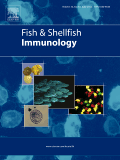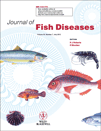
FISH PHYSIOLOGY AND BIOCHEMISTRY
Scope & Guideline
Bridging Gaps in Aquatic Biology Knowledge
Introduction
Aims and Scopes
- Physiological Responses to Environmental Changes:
Research exploring how fish adapt physiologically to variations in their environment, including temperature fluctuations, hypoxia, salinity changes, and other stressors. - Nutritional Physiology:
Investigations into the effects of dietary components on fish health, growth performance, and metabolic processes, including studies on dietary supplements and alternative feed sources. - Molecular and Cellular Mechanisms:
Studies that delve into the molecular and cellular responses of fish to various stimuli, including gene expression, metabolic pathways, and cellular stress responses. - Reproductive Biology:
Research focusing on the reproductive strategies of fish, including hormonal regulation, gamete quality, and the impacts of environmental factors on reproductive success. - Health and Disease Management:
Investigations into the immune responses of fish to pathogens and stressors, including studies on disease resistance and the effects of stress on fish health. - Biochemical Markers and Indicators:
The development and application of biochemical markers to assess fish health, environmental quality, and physiological responses to various treatments or conditions.
Trending and Emerging
- Climate Change Impact Studies:
Research examining the effects of climate change on fish physiology and biochemistry is on the rise, focusing on adaptation mechanisms and resilience of fish populations. - Nutraceuticals and Functional Feeds:
Increasing interest in the use of nutraceuticals and functional feeds to enhance fish health and performance has become a prominent theme, reflecting a shift towards improving aquaculture sustainability. - Genomic and Transcriptomic Approaches:
The application of genomic and transcriptomic methods to study fish biology is emerging, allowing for deeper insights into the molecular mechanisms underlying physiological responses. - Microbiome Research:
Studies exploring the role of the gut microbiome in fish health and nutrition are gaining traction, highlighting its importance in aquaculture and environmental health. - Stress Physiology and Management:
Research focusing on understanding stress responses in fish, including coping mechanisms and management strategies to enhance welfare in aquaculture settings, is increasingly relevant.
Declining or Waning
- Traditional Aquaculture Practices:
Research focusing on conventional aquaculture methods appears to be waning, as newer sustainable practices and alternative feed sources gain prominence. - Invasive Species Studies:
Studies concentrating on the physiological impacts of invasive fish species on local ecosystems have decreased, possibly due to shifting research interests towards conservation and biodiversity. - Basic Morphological Studies:
There is a noticeable decline in purely morphological studies, as the field increasingly emphasizes molecular and physiological approaches to understand fish biology. - Environmental Toxicology of Lesser-known Contaminants:
Research on the effects of lesser-known environmental contaminants on fish physiology has become less frequent, possibly overshadowed by more pressing issues like climate change and habitat degradation.
Similar Journals

JOURNAL OF EVOLUTIONARY BIOCHEMISTRY AND PHYSIOLOGY
Unraveling the Secrets of Life Through Evolutionary InsightsJOURNAL OF EVOLUTIONARY BIOCHEMISTRY AND PHYSIOLOGY, published by PLEIADES PUBLISHING INC, is a pivotal periodical that delves into the intricate relationships between biochemical processes and evolutionary dynamics. With its ISSN 0022-0930 and E-ISSN 1608-3202, this journal serves as a comprehensive platform for researchers, professionals, and students dedicated to understanding the physiological adaptations and biochemical mechanisms influenced by evolutionary pressures. Although it is not an open access journal, it offers valuable insights across its historically significant coverage spanning from 1972 to 2017, making it an essential resource for those working in agricultural, biological, and molecular sciences. Despite its current Scopus rankings revealing limited visibility within its fields, the journal remains committed to fostering scholarly dialogue and advancing knowledge in the realm of evolutionary biochemistry, especially for those exploring the ecological, genetic, and integrative physiological aspects of life.

Journal of Comparative Physiology B-Biochemical Systems and Environmental Physiology
Connecting Physiology and Biochemistry with Ecological ImpactJournal of Comparative Physiology B-Biochemical Systems and Environmental Physiology, published by SPRINGER HEIDELBERG in Germany, stands at the forefront of research in the fields of physiology, biochemistry, and ecological systems. With a commitment to fostering interdisciplinary communication, this journal has been a vital resource since its inception in 1974, converging scientific exploration through the lens of biochemical mechanisms and environmental adaptations in animal systems. Renowned for its rigorous peer-review process, it has achieved impressive rankings, including Q2 in Animal Science and Zoology and Ecology, Evolution, Behavior and Systematics, reflecting its substantial impact within these disciplines. The journal aims to disseminate cutting-edge research that advances our understanding of physiological and biochemical processes while addressing contemporary environmental challenges. While currently operating on a traditional access model, the journal's contributions are crucial for researchers, professionals, and students seeking profound insights into the complex interactions between organisms and their environments.

CELLULAR PHYSIOLOGY AND BIOCHEMISTRY
Transforming Understanding through Open ScienceCellular Physiology and Biochemistry is a premier Open Access journal published by the prestigious Cell Physiol Biochem Press GmbH & Co, dedicated to advancing research in the fields of physiology, biochemistry, and molecular biology. Since its inception in 1987 and transitioning to an Open Access model in 2013, the journal has established itself as a vital resource for the dissemination of high-quality research and reviews, showcasing innovative methodologies and groundbreaking findings in cellular processes. With an impressive ranking in the 2023 Scopus category as Q2 in Physiology and a robust percentile of 61, Cellular Physiology and Biochemistry is committed to fostering academic dialogue among researchers, professionals, and students alike. This journal not only provides unrestricted access to its articles, but also promotes the global sharing of knowledge, which is essential for the advancement of our understanding in these vital scientific areas. The journal's editorial team is dedicated to ensuring the highest standards of academic rigor and relevance, making it an indispensable addition to the libraries of those engaged in the life sciences.

PHYSIOLOGICAL AND BIOCHEMICAL ZOOLOGY
Fostering Innovation in Animal Science ResearchPhysiological and Biochemical Zoology is a distinguished peer-reviewed journal published by University of Chicago Press, focusing on the interrelated fields of animal physiology, biochemistry, and zoology. With a strong commitment to advancing scientific understanding, this journal serves as a vital resource for researchers, professionals, and students alike, providing a platform for the latest findings and advancements in the field. Ranking in the top quartile (Q1) in Animal Science and Zoology as of 2023, and showcasing a substantial convergence of historical data from 1999 to 2023, its impact in the academic community is underscored by its engagement with high-quality research. While it also appears in the third quartile for Biochemistry and Physiology, the journal successfully integrates these disciplines, reflecting the complexity of biological systems. Available for reading via various access options, this journal is essential for anyone seeking to deepen their knowledge or contribute to the field of Zoological sciences.

FISH & SHELLFISH IMMUNOLOGY
Advancing Knowledge in Fish and Shellfish Defense MechanismsFISH & SHELLFISH IMMUNOLOGY is a premier journal dedicated to advancing the understanding of immune responses in fish and shellfish, published by Academic Press Ltd - Elsevier Science Ltd. Since its inception in 1991, this journal has played a crucial role in disseminating cutting-edge research that intersects aquatic science, immunology, and environmental chemistry. With an impressive impact factor reflected by its 2023 rankings, it holds a Q1 quartile in Aquatic Science and Immunology, indicating its significant prestige and influence within the scientific community. The journal not only serves as a vital resource for researchers and professionals in the field but also reaches a broader audience interested in the ecological and health implications of aquatic immunology. Although it follows a subscription model, its extensive reach and high visibility within databases ensure that groundbreaking research and reviews are accessible to those interested in advancing knowledge in these interdisciplinary areas. With ongoing convergence towards 2024 and beyond, FISH & SHELLFISH IMMUNOLOGY remains a central platform for innovative studies that continue to shape the future of aquaculture and environmental sustainability.

FISHERIES SCIENCE
Unlocking the potential of fisheries science for tomorrow.Fisheries Science, published by Springer Japan KK, is a renowned journal in the field of aquatic science, effectively bridging the gap between scientific research and practical application in fisheries management. With an ISSN of 0919-9268 and an E-ISSN of 1444-2906, this journal serves as a vital resource for researchers, professionals, and students interested in advancing their knowledge and understanding of aquatic ecosystems and fishery practices. Operating within a competitive landscape, Fisheries Science has achieved a respectable ranking in Scopus, placing 96th out of 247 journals in the Agricultural and Biological Sciences > Aquatic Science category, showcasing its integral role in contributing to this dynamic field. The journal encompasses a wide range of topics from sustainable development to conservation strategies, aiming to foster collaborative research and innovative solutions to the challenges facing fisheries today. While not an open-access journal, Fisheries Science remains a key publication for those dedicated to marine science and the sustainable management of aquatic resources, with a historical footprint extending from 1994 to 2024.

Physiological Genomics
Exploring the Nexus of Genetics and PhysiologyPhysiological Genomics is a prestigious scholarly journal published by the American Physiological Society, dedicated to advancing the understanding of the genetic underpinnings in physiology. With an ISSN of 1094-8341 and an E-ISSN of 1531-2267, this journal serves as a vital platform for researchers exploring the intersection of genetics and physiological processes. As of 2023, it enjoys a respectable impact factor, particularly standing strong in the Q2 quartile in both Genetics and Physiology categories, illustrating its importance within a competitive landscape. With an impressive rank of #69 out of 193 in Biochemistry, Genetics, and Molecular Biology - Physiology, and #128 out of 347 in Genetics, it reflects a robust commitment to quality research. Committed to fostering innovation, Physiological Genomics provides comprehensive access to groundbreaking studies from 1999 to 2024 and remains a quintessential resource for researchers, professionals, and students alike aiming to enhance their understanding of physiological genomics.

FISH PATHOLOGY
Elevating the standards of fish health research worldwide.FISH PATHOLOGY is a vital journal dedicated to the field of aquatic animal health, published by the Japan Society of Fish Pathology. With a strong publication history dating back to 1967, this interdisciplinary journal aims to promote high-quality research focusing on the pathologies affecting fish and other aquatic organisms. Despite its category quartiles ranking of Q3 in both Animal Science and Zoology and Aquatic Science, the journal maintains a growing presence within the scientific community, holding a respectable position in Scopus rankings. Researchers and professionals looking for deep insights into fish health management and disease pathology will find FISH PATHOLOGY to be an invaluable resource for advancing knowledge and fostering collaboration in this essential area of study. Although the journal does not currently offer open access, its comprehensive analyses and findings are crucial for both academic and practical applications in fisheries and aquaculture worldwide.

Fish and Shellfish Immunology Reports
Advancing knowledge in aquatic immunology.Fish and Shellfish Immunology Reports is a distinguished journal published by ELSEVIER, focusing on the vital intersection of immunological responses in aquatic organisms. Established in 2021, it has quickly gained recognition for its contributions to the fields of Aquatic Science and Immunology, achieving a commendable Q2 ranking in Aquatic Science and a Q3 ranking in Immunology as of 2023. This journal is pivotal for researchers, professionals, and students, providing a platform for the dissemination of innovative research findings and critical reviews on fish and shellfish immunology. Based in the United Kingdom, Fish and Shellfish Immunology Reports remains committed to advancing scientific knowledge and collaboration in this niche yet significant area of study. The journal is indexed in Scopus, illustrating its academic credibility with rankings in both the Agricultural and Biological Sciences as well as the Immunology and Microbiology categories. Although currently not an open-access publication, it prides itself on maintaining high standards of peer review and ethical research practices.

JOURNAL OF FISH DISEASES
Exploring the depths of fish pathology and management.JOURNAL OF FISH DISEASES, published by WILEY, stands as a preeminent peer-reviewed journal in the fields of aquatic science and veterinary medicine. With its ISSN 0140-7775 and E-ISSN 1365-2761, this journal has been a leading platform for disseminating groundbreaking research since its inception in 1978. Recognized for its excellence, it boasts a Q1 ranking in both Aquatic Science and Veterinary (miscellaneous) categories for 2023, affirming its vital role in advancing knowledge in fish pathology and health management. The journal engages a diverse audience of researchers, professionals, and students committed to tackling fish diseases and enhancing aquaculture practices. Although it does not offer open access, the journal ensures high visibility and accessibility to key research findings that impact aquatic ecosystems and veterinary practices globally. With a commitment to fostering innovation, the JOURNAL OF FISH DISEASES continues to shape the future of aquatic health research well into its convergence through 2024.